Published November 8, 2024. This post may contain affiliate links. Please read my disclosure policy.
Discover how simple it is to truss beef and the amazing benefits of it to make a more flavorful, juicy, roast. This easy procedure is an age-old technique to ensure the beef is evenly cooked and tender throughout.
Trussing beef was one of the first fundamental techniques I learned in culinary school. I learned the benefits, the different ways to do it, and how it can be done on just about any large piece of animal protein. You can actually see how I put this in practice in my bottom round roast recipe and standing ribeye roast.
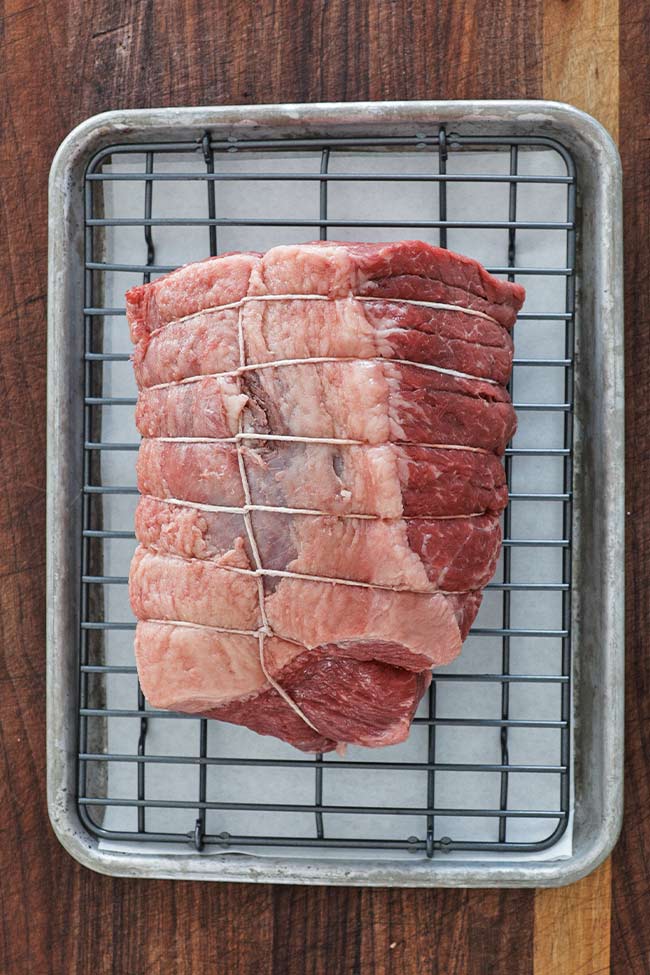
Trussing Beef
Trussing beef is the process of tying a large piece of meat with butchers’ twine, pins, or skewers, so that the hunk of beef keeps it shape which aids in more even cooking throughout. Often when large pieces of meat are not trussed, they can sag or one part of it falls when cooking which means those pieces can be more well done when the goal was medium-rare throughout.
I always truss larger cuts of meat before roasting it. Even with the benefits of it being more delicious, we eat with our eyes and when a large cut of meat is perfectly shaped and perfectly cooked through, it makes us crave it even more.
Trussing anything requires the use of butcher’s twine. You can pick this up for cheap and a grocery store or online. Twine is strong and can keep everything tied tight and won’t fall apart when cooking. Do not use thread as it will break when trying to do this procedure.
Ingredients and Substitutions
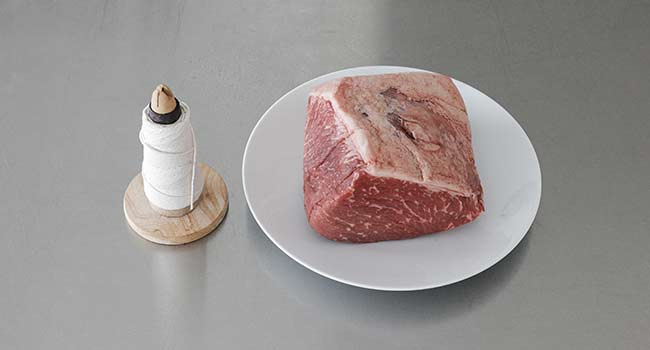
- Meat – Any large cut of beef will work for this procedure.
- Twine – You can use any kind of butcher’s twine. When trussing beef, you’ll need a decently long piece to ensure it is completely wrapped from end to end.
How to Truss Beef or Tie a Roast
Start with the fat cap side of the meat you are tying.
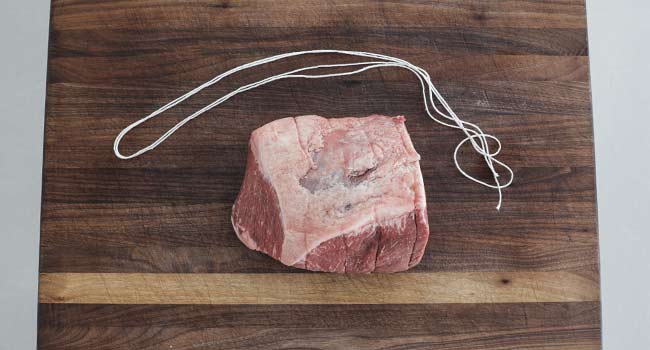
Next starting on the left side of the meat and wrap the twine around it.
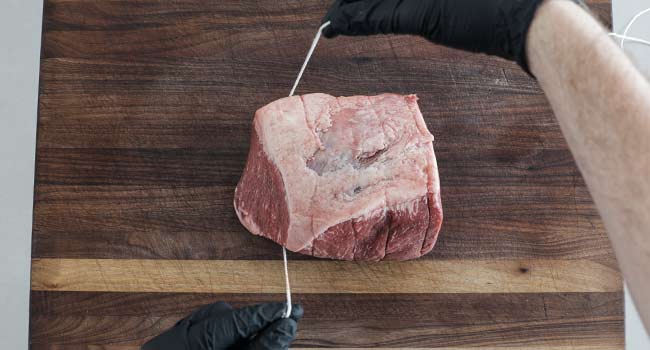
Tie a double knot ensuring most of the string is still left to be used. There should maybe only be 3 to 4 inches left of the other part of the string that you just tied in a knit.
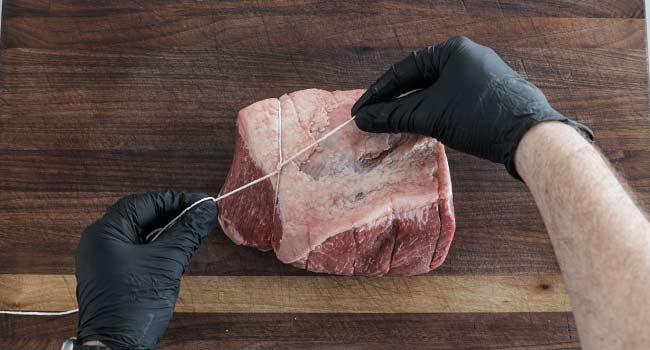
Make a marker with your left finger about an inch to the right of were you just tied that knot and pull the string just over your finger tip.
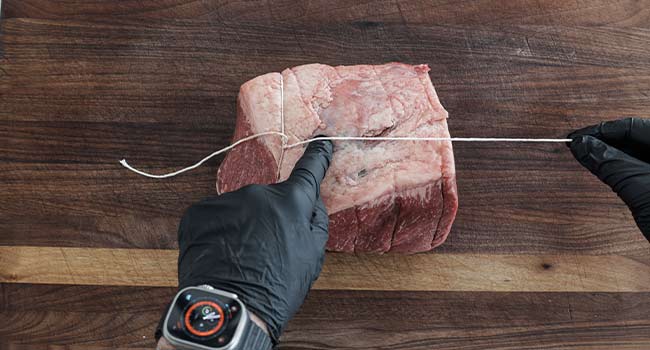
Wrap the string around where your finger marker is.
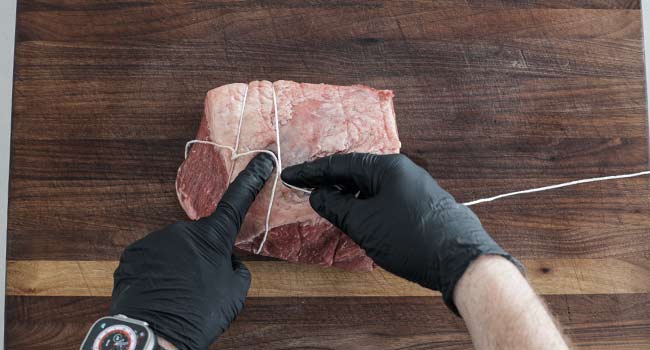
Pull the long end of the string under where your finger marker was.
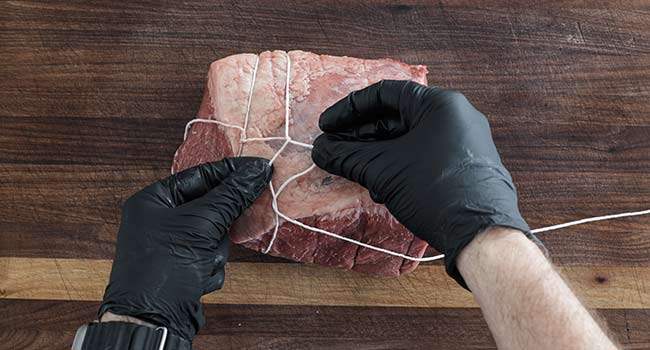
Next, pull the right side of the string to create tension on where it was just wrapped.
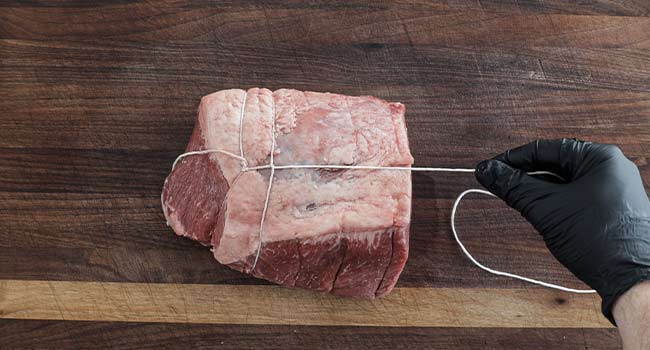
Repeat the process by going over one inch and doing the same procedure.
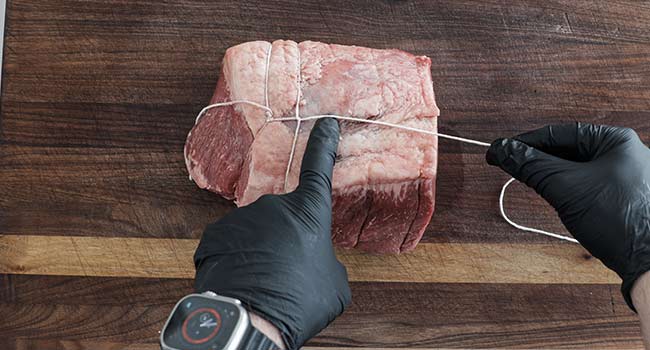
Tie the twine all the way down the beef until it is trussed.
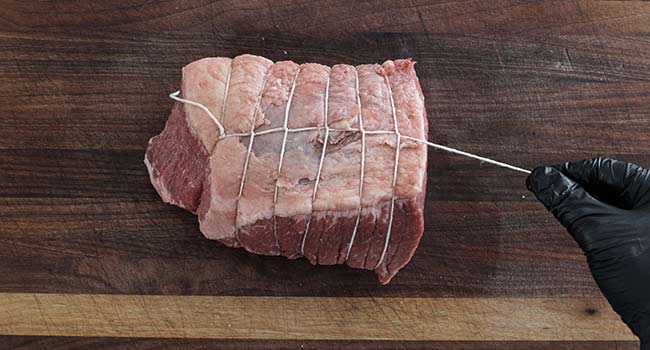
Next, turn the piece of meat over so that it is fat cap side down.
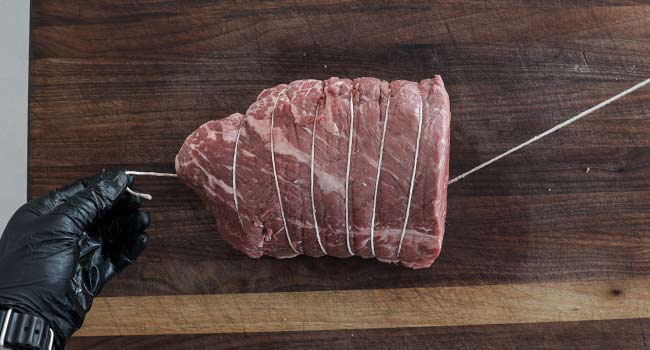
Now, take the long end of the string and go under every other piece of string until you get to the end.
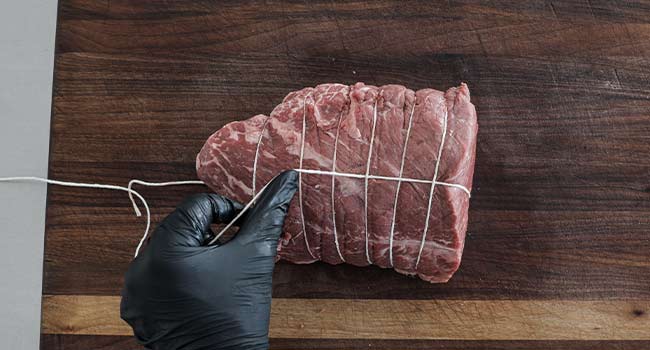
Once you’re down to the end, tie a double knot with the leftover piece of string from your first knit.
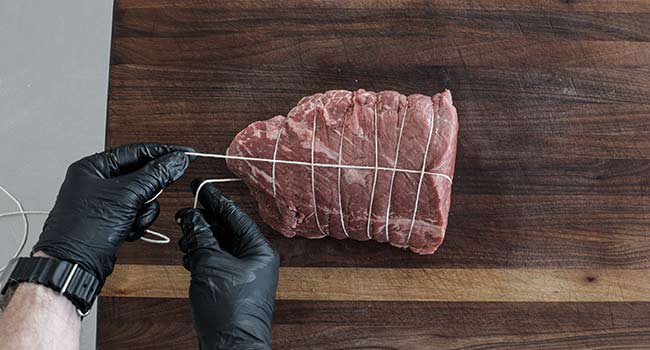
Cut off any excess beef.
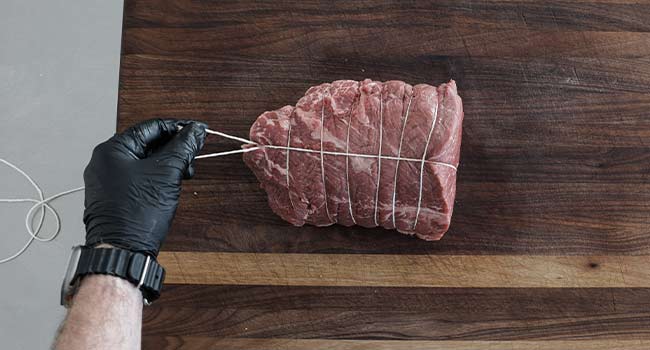
Season the meat and cook it as you’d like,
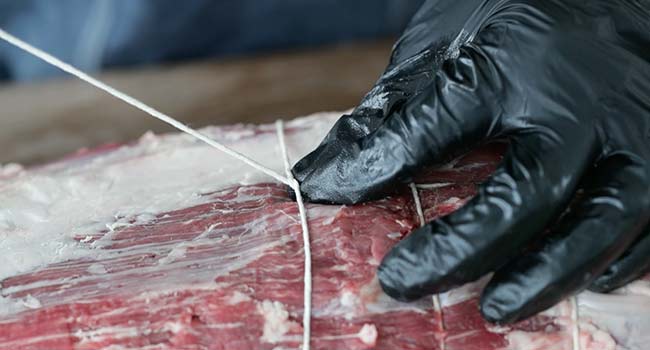
Make-Ahead and Storage
Make-Ahead: You can truss beef up to 2 to 3 days before cooking it.
How to Store: If you are dry brining then you will want to keep the meat uncovered, but if you are using a wet marinade, you’ll want to cover the trussed piece of meat.

Chef Notes + Tips
- You can also wrap a steak like ribeye or filet mignon to help keep its shape. It doesn’t have to be entirely limited to a big piece of meat.
- I prefer to start this process fat cap side up but can be done with it down on your cutting board.

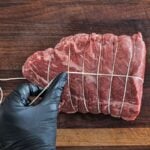
How to Truss Beef (Tie a Roast)